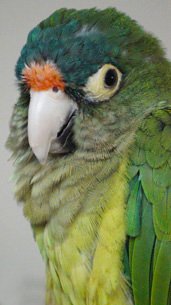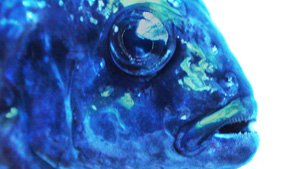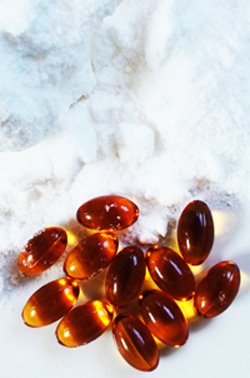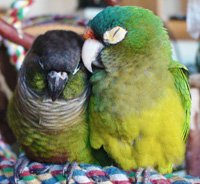26th Feb 2010
Does Your Pet’s ‘Natural Pet Food’ Contain Toxins from Sewage Sludge?
If your pet’s food isn’t certified organic,* it most likely contains toxins from sewage sludge that has been used to fertilize the crops grown for ‘conventional’ (i.e., non-certified organic) ingredients or that were fed to the non-organically raised animals used as ingredients.
* [Certified organic pet foods have to be produced without ingredients that were grown with or raised on sewage sludge-treated feed.]
Hm… so what exactly is sewage sludge? It doesn’t sound good for sure…
Here is what Sludgenews says about it:
“Sewage is the mix of water and whatever wastes from domestic and industrial life are flushed into the sewer. To retrieve the precious water, the sewage is then “treated,” that is, “cleaned,” in what are called “treatment plants.” The ideal of the treatment plant is to take out of the sewer water all the “wastes” that sewering put into it. The water is “cleaned” in the degree to which the pollutants which had turned the water into sewage are removed by treatment-primary, secondary, or tertiary-and concentrated in the sludge.
We must note that, though the aim of sewage treatment is to produce clean water, it is never to produce “clean” sludge. Indeed, the “dirtier” the sludge-the more complete its concentration of the noxious wastes-the more the treatment has done its job. If there are industrial chemicals, pharmaceuticals, hormones, nano particles, prions, hospital wastes including antibiotic-resistant bacteria-and there will be all of these-you want them to end up in the sludge. Every waste produced in our society that can be got rid of down toilets and drains and that can also be got out of the sewage by a given treatment process will be in the sludge.
Sludge is thus inevitably a noxious brew of vastly various and incompatible materials unpredictable in themselves and in the toxicity of their amalgamation, incalculably but certainly wildly dangerous to life.
The policy of disposing of sludge by spreading it on agricultural land-a policy given the benign term “land application”-has its inception in the Ocean Dumping ban of 1987. Before 1992, when the law went into effect, the practice had been, after extracting the sludge from the waste water, to load it on barges and dump it 12, and later 106 miles off shore into the ocean.
But many people who cared about life in the ocean knew that, wherever it was dumped, the sludge was causing vast dead moon-scapes on the ocean floor. New EPA regulations for “land application” were promulgated in 1993. With the aid of heating and pelletizing and some slippery name morphs along the way, EPA claimed sludge could be transmogrified into “compost”: compost, the sacred substance of all real farmers. And this “compost,” this Trojan Horse replete with the most complex array of toxic materials industrial civilization has ever known, would “fertilize” America’s farmlands.
To carry out this plan EPA made a “win-win” deal with some solid-waste hauling corporations. In return for taking the sludge off the hands of municipalities, the corporate haulers would get the tax dollars that had previously gone to pay for dumping the sludge in the local landfill. This deal was indeed a “win” for municipal authorities who had suffered the mess, and worse the liability of sludge; it was a “win” for the corporations which, besides getting the tax dollars, wouldn’t suffer from the liability either because that, amazingly, was transferred to the farmer on whose land the sludge is spread.
But the land “application” of sewage sludge represents a clear lose-lose-for people and for the environment-on a scale staggering to contemplate. It will pollute the whole chain of life for which soil is the base.”
What can you do about this?
The first and easiest thing is to inform yourself more about sewage sludge and how it applies to agriculture and the food you and your pet eat. The second step is to avoid adding to the toxicity of the sewage water. The third step is to choose certified organic food products, for yourself and your pet so that neither of you falls victims to hidden toxins in your food. This will also support (certified) organic agriculture and (pet) food manufacturers, which in turn will help put an end to the abundant use of toxic sewage sludge in conventional agriculture. The fourth step is to urge your legislators to prohibit the use of sewage sludge in agriculture and to prevent toxins entering sewage systems to begin with.
As another Green America-approved business friend pointed out: “Non-certified organic products shouldn’t just be called ‘conventional’ products - they’re supposed to be called ‘toxic’ products.” He’s right.
The important thing is to be educated. One needs to understand that many pet foods that aren’t certified organic but marketed as ‘natural’ are more likely pet foods that are laced with many more toxins than pesticides, hormones, antibiotics, or GMOs.
If your pet’s food isn’t certified organic,* it most likely contains toxins from sewage sludge that has been used to fertilize the crops grown for ‘conventional’ (i.e., non-certified organic) ingredients or that were fed to the non-organically raised animals used as ingredients.
* [Certified organic pet foods have to be produced without ingredients that were grown with or raised on sewage sludge-treated feed.]
Hm… so what exactly is sewage sludge? It doesn’t sound good for sure…
Here is what Sludgenews says about it:
“Sewage is the mix of water and whatever wastes from domestic and industrial life are flushed into the sewer. To retrieve the precious water, the sewage is then “treated,” that is, “cleaned,” in what are called “treatment plants.” The ideal of the treatment plant is to take out of the sewer water all the “wastes” that sewering put into it. The water is “cleaned” in the degree to which the pollutants which had turned the water into sewage are removed by treatment-primary, secondary, or tertiary-and concentrated in the sludge.
We must note that, though the aim of sewage treatment is to produce clean water, it is never to produce “clean” sludge. Indeed, the “dirtier” the sludge-the more complete its concentration of the noxious wastes-the more the treatment has done its job. If there are industrial chemicals, pharmaceuticals, hormones, nano particles, prions, hospital wastes including antibiotic-resistant bacteria-and there will be all of these-you want them to end up in the sludge. Every waste produced in our society that can be got rid of down toilets and drains and that can also be got out of the sewage by a given treatment process will be in the sludge.
Sludge is thus inevitably a noxious brew of vastly various and incompatible materials unpredictable in themselves and in the toxicity of their amalgamation, incalculably but certainly wildly dangerous to life.
The policy of disposing of sludge by spreading it on agricultural land-a policy given the benign term “land application”-has its inception in the Ocean Dumping ban of 1987. Before 1992, when the law went into effect, the practice had been, after extracting the sludge from the waste water, to load it on barges and dump it 12, and later 106 miles off shore into the ocean.
But many people who cared about life in the ocean knew that, wherever it was dumped, the sludge was causing vast dead moon-scapes on the ocean floor. New EPA regulations for “land application” were promulgated in 1993. With the aid of heating and pelletizing and some slippery name morphs along the way, EPA claimed sludge could be transmogrified into “compost”: compost, the sacred substance of all real farmers. And this “compost,” this Trojan Horse replete with the most complex array of toxic materials industrial civilization has ever known, would “fertilize” America’s farmlands.
To carry out this plan EPA made a “win-win” deal with some solid-waste hauling corporations. In return for taking the sludge off the hands of municipalities, the corporate haulers would get the tax dollars that had previously gone to pay for dumping the sludge in the local landfill. This deal was indeed a “win” for municipal authorities who had suffered the mess, and worse the liability of sludge; it was a “win” for the corporations which, besides getting the tax dollars, wouldn’t suffer from the liability either because that, amazingly, was transferred to the farmer on whose land the sludge is spread.
But the land “application” of sewage sludge represents a clear lose-lose-for people and for the environment-on a scale staggering to contemplate. It will pollute the whole chain of life for which soil is the base.”
What can you do about this?
The first and easiest thing is to inform yourself more about sewage sludge and how it applies to agriculture and the food you and your pet eat. The second step is to avoid adding to the toxicity of the sewage water. The third step is to choose certified organic food products, for yourself and your pet so that neither of you falls victims to hidden toxins in your food. This will also support (certified) organic agriculture and (pet) food manufacturers, which in turn will help put an end to the abundant use of toxic sewage sludge in conventional agriculture. The fourth step is to urge your legislators to prohibit the use of sewage sludge in agriculture and to prevent toxins entering sewage systems to begin with.
As another Green America-approved business friend pointed out: “Non-certified organic products shouldn’t just be called ‘conventional’ products - they’re supposed to be called ‘toxic’ products.” He’s right.
The important thing is to be educated. One needs to understand that many pet foods that aren’t certified organic but marketed as ‘natural’ are more likely pet foods that are laced with many more toxins than pesticides, hormones, antibiotics, or GMOs.
 Posted by Heidi Junger, PhD under
Posted by Heidi Junger, PhD under  Organic Pet Food Standards
Organic Pet Food Standards  Comments Off
Comments Off


 Lawns
Lawns Pesticide in water and fish
Pesticide in water and fish … It is almost shameful that we nowadays use, or if you are a real natural pet food manufacturer, have to use, the term ‘natural’ to describe pet foods. Pet food should be natural without having to make a big deal out of it. However, time is always changing! And so are advertising claims and marketing needs…
… It is almost shameful that we nowadays use, or if you are a real natural pet food manufacturer, have to use, the term ‘natural’ to describe pet foods. Pet food should be natural without having to make a big deal out of it. However, time is always changing! And so are advertising claims and marketing needs… … and animals love each other and Onesta Organics pet foods!
… and animals love each other and Onesta Organics pet foods!